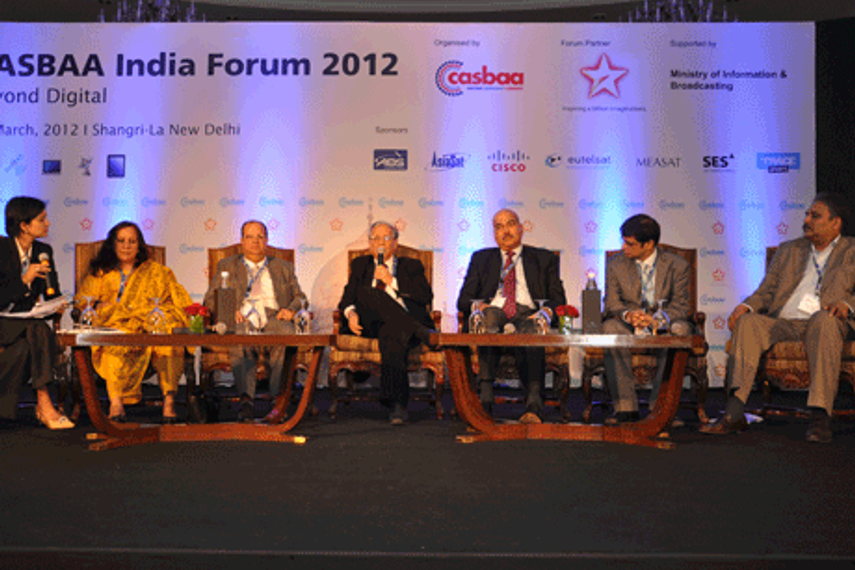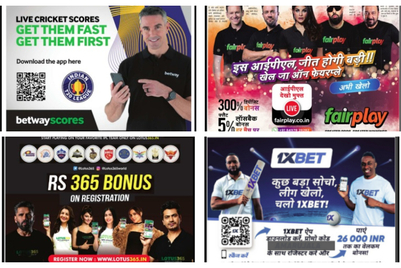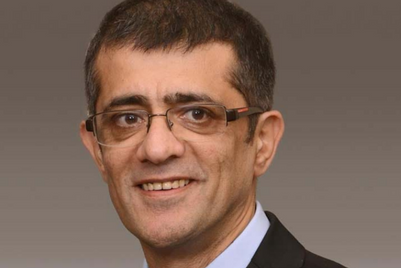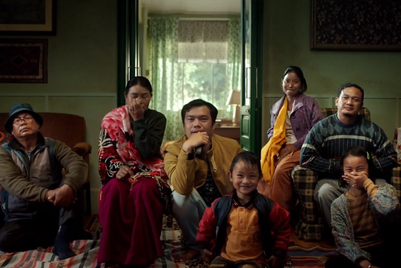
The CASBAA India Forum 2012 saw media owners, government regulators, DTH operators, MSOs and satellite service operators converge at Shangri La, New Delhi, to discuss the pertinent issues in the Indian satellite and broadcast market, especially in light of the June 30 deadline set by the Ministry of Information & Broadcasting (MIB) to digitise the cable TV networks in the four metros.
Said Paul Brown-Kenyon, chairman, CASBAA Satellite Industry Committee in his welcome message, “This year’s theme ‘Beyond Digital’ is timely in light of government’s plan to digitize the country’s cable TV networks which will ultimately translate into a wider choice of TV content, better quality of transmission and increased value added services for consumers.”
The forum started with a keynote address by Uday Kumar Varma, secretary, MIB, in which he reiterated the importance of digitisation of cable network in India that will be beneficial for all stakeholders and firmly denied any intentions of shifting the June 30 deadline. Once the metros are digitised, it should be possible to extend it to other areas.
Session 1: The big picture
Taking off from the secretary’s address, industry heavy weights debated the possibility of meeting the June 30 deadline and the measures that need to be taken to fully tap into the opportunities that will open up post digitalization in the session, “The big picture.”
According to Ashok Mansukhani, president, MSO Alliance and management consultant, M/s Hinduja Ventures, the June 30th deadline was like a mirage in the Siberian desert. He said that it was possible to meet the deadline only if the government, on its part, sets rules of the business in place. “There are numerous questions that need to be answered: Will the proposals made by Trai in August 2010 be given a shrug or a go ahead; what are the new CAS (conditional access service) licensing rules; specifications on tariffs, revenue sharing and interconnect, etc. If the government is ready with answers, the industry is ready to meet the deadline.”
He further added that going forward the government will have to relook at the price points of digital cable TV. “The government works on the lowest common denominator formula – giving maximum choice to the least paying consumer. But for businesses to be profitable, this working mechanism has to be re-worked. The consumers have to start paying more for better quality and services.”
Sunil Lulla, vice president, IBF and managing director and chief executive officer, Times TV Network, resonated Mansukhani’s reasoning about the need for consumers to shell out more for digital offerings. “Today, a viewer pays as little as 50 paisa to watch an hour of TV. Even this revenue does not reach the channels completely because of under-reporting by local cable operators. While with digitalization, subscription revenues will help ease the dependence of broadcasters on TRPs, consumers need to pay more for better picture and content quality, as well as services that will go beyond audio-visual entertainment. ”
Narayan Rao, president, News Broadcaster Association and executive vice chairperson, NDTV, said that news channels were particularly hard hit but ‘carriage fee’ that accounted for almost one-third of the total costs of a broadcaster. “Subscription revenues are expected to ease away some of our carriage pain and prove to be a game changer in the long run.”
Lulla stressed upon the importance of educating the consumer about the benefits of digitalization and said that IBF on its part will release ads in Hindi, English, Tamil and Bengali nation-wide that will take up 3,000 spots every day till the sunset date. “The government, however, has not done much to create awareness.”
Session 2: Bandwidth buys; satellite supply & demand mismatch?
In a panel discussion on the bandwidth and satellite related issues and opportunities in India held during CASBAA 2012, panellists voted HD and niche thematic channels as the big impact
makers.
Prashant Butani, client manager, Cable & Wireless Worldwide, who hosted the discussion said,
“India has had two waves of demand: DTH and now HD channels. Niche channel is the new
Wave that has been getting higher and higher.”
Tom Choi, chief executive officer, ABS said, “HD channels are the clear differentiators when it comes to inter and intra DTH and cable service war. If the regulatory rules allow international service providers to come in and provide capacity to the market, I see a very bright future.”
Stephane Thibault, managing sales director, IntelSat and one of the panelists felt that southern
India is one of the hotspots of this wave. HD plays a key role in our South Asia offering. It is one of the drivers. In fact, the southern part of India is doing pretty well.”
Sabrina Cubbon, vice president, sales and marketing, AsiaSat added “There are still around 50
channels pending approval from the govt. Most of it are regional and niche channels serving
general or news content. There is a certain momentum.”
Andrew Wallace, chief commercial officer, Eutelsat felt that the diverse culture of the country
has driven the rise of thematic or niche channels. At the same breath he doesn’t seemed satisfied with the rate of growth, “In HD, the rate of growth in the number of new channels is fast, but still the numbers are very low. It is still only 7% of the total channel offering.”
Finally it boiled down to the remarks made by Amitabh Kumar, president – technology, Zee
Network, in his introductory speech. He had said, “Provided we can find a solution for the
constraints arising out of the satellite bands in an effective manner, we have a big opportunity.
We just need to learn how to leverage this.”
Session 3: DTH density
In the post lunch session, “DTH Density”, DTH majors explained why despite DTH subscriber base increasing in India, DTH operators are reportedly still bleeding cash and facing issues like high cost of acquisition of content, low ARPUs, taxes, etc. and what will be the new game changers going forward. Said Harit Nagpal, managing director and chief executive officer, Tata Sky, “DTH is an infrastructure business where the operators invest upfront in laying down the brick and mortar for the industry as well as investing in subscribers, not consumers, and only hope to reap benefits in the long term. However, in the purview of taxation, it is seen as an entertainment industry and taxed heavily – 10% of the revenue as license fee; 10% as entertainment tax and another 12% as service tax. In an industry where there are three beneficiaries – government from taxes; broadcasters from distribution revenues and DTH operators from long term revenues once infrastructure is paid for, why do we have to bear all the investment costs as well as all the risks?”
When asked if DTH would face any competition from digitalization of cable TV, Sanjay Behl, chief executive officer, Reliance DTH & IPTV group head – brand & marketing, Reliance Communications said, “DTH has over 10 years of head-start over cable. We have mastered the billing processes, the logistics of seating Set Top Boxes, brand building, communication with the consumer, etc. The blood bath happened when the DTH industry saw two players becoming six but that taught us to innovate in form of pay-per-view; video-on-demand; personal video recorder; gaming, etc. It has changed the ‘appointment-based’ TV viewing to ‘customized viewing’.
Session 4: The regulatory mandate
CASBAA organized a panel discussion with eminent names of the broadcast and cable industry that probed the regulatory landscape for all stakeholders in the industry. The discussion preceded with an introductory remark by Supriya Sahu, join secretary,MIB.
“The question is not if we want or do not want regulation. It is about setting up an equitable platform for competition. The policy needs to keep pace with technological advancement, and that is really difficulty. Currently, technology is much ahead of policy,” she said.
She also gave highlights of the Cable Regulation Act (amendment 2011) that proposes and supports digitisation of cable network. The first phase of compulsory digitisation of the cable network has been set to June 30. She ruled out any possibility of extending the date and emphasised that not adhering to the regulation would be punishable under section 11 of the Act that makes it mandatory for cable operators to beam digital signals.
Asked about the challenges that they anticipate in implementing the regulations, Pulak Bagchi, vice president – legal and regulatory affairs, Star India said, “Standing today, the biggest challenge is time frame. But the bottom-line is not to panic.”
Anil Khera, chief executive officer, Videocon d2h echoed Bagchi’s opinion and said, “The time frame which all of us have got (four months) would be a tough nut to crack. However, this deadline doesn’t come as a surprise to us; there have been several notices prior to this. But still it’s a big challenge.”
K Jayaraman, chief executive officer and managing director, Hathway Cable & Datacom that has bought set top boxes for Rs 300-crore said, “To not to panic we must be Lord Buddha!”
Taking a serious look at the opportunities that the regulation might drive, Ravi Mansukhani, managing director, IMCL said, “This is the age of convergence; it’s not just about digitizing the signals. The unified license regime is a great move in this sphere, but to get all leaders on one panel would be a challenge.” He also agreed that it is easily said than done. “It is going to be tough. OTT makes every content maker a broadcaster. Right now, we don’t have the bandwidth; and even if 4G enters the market, the cost would be sky-high. This means that smaller players will have to consolidate to support infrastructure need,” he added.
The panel also discussed the threat from Internet TV for DTH and Cable broadcasters. “Internet TV is still long away. Once the national broad brand plans comes into force, it might work; but till then, it has miles to go,” Bagchi said.
Sanjay Rohatgi, senior vice president sales, Cisco India while nodding his assent with Bagchi’s views added that the real war is now between the screens. People are going to watch the content on different screens; be it tablet, TV, screens etc. I still believe that Internet TV won’t be able to hamper the DTH and cable network.
Session 5: The advertising revenue advantage
Vikram Sakhuja, chief executive officer, Group M South Asia, giving a media buyer’s perspective to digitisation explained that while most players in the industry are looking to reduce dependence on advertising-led revenue streams, digitalization can actually help them expand the revenue pie by slicing and dicing and targeting the viewers. “Digitalisation can convert television from an undifferentiated mass media to a targeted mass medium thus getting advertisers to spend more on differentiated audience.”
He further explained that digitalisation can actually create a new business model for broadcasters where niche channels turn their back on carriage fee and on back of exclusive content and a 100% subscription-driven model create a critical mass of audience which will have advertisers chasing them. Digitalisation will lead to technologies such Internet television coming into India thus, making it a lean forward medium from a lean back medium. “And the fact that most of the people have their phones in their hands and computers on their laps while watching television, digitalization will completely change the way consumers engage with TV content and programming,” said Sakhuja.
Most importantly, he added, digitalisation of cable TV will give operators a huge database about TV viewing habits of their consumers which is the holy grail of targeting and has immense monetisation possibilities.


.jpg&h=334&w=500&q=100&v=20250320&c=1)
.jpg&h=334&w=500&q=100&v=20250320&c=1)

.jpg&h=334&w=500&q=100&v=20250320&c=1)


.jpg&h=334&w=500&q=100&v=20250320&c=1)







.jpg&h=268&w=401&q=100&v=20250320&c=1)
.png&h=268&w=401&q=100&v=20250320&c=1)


